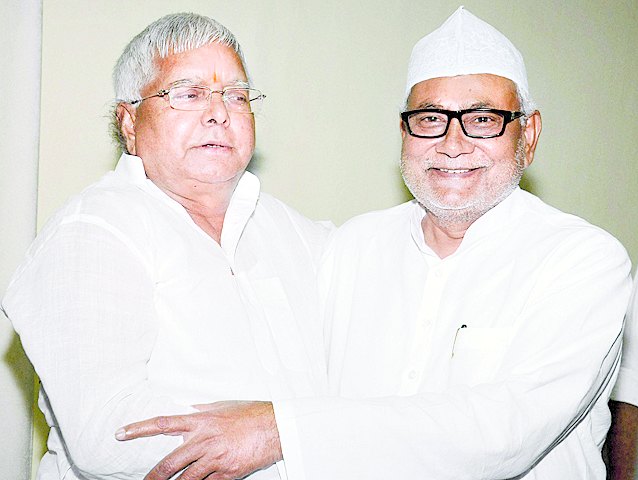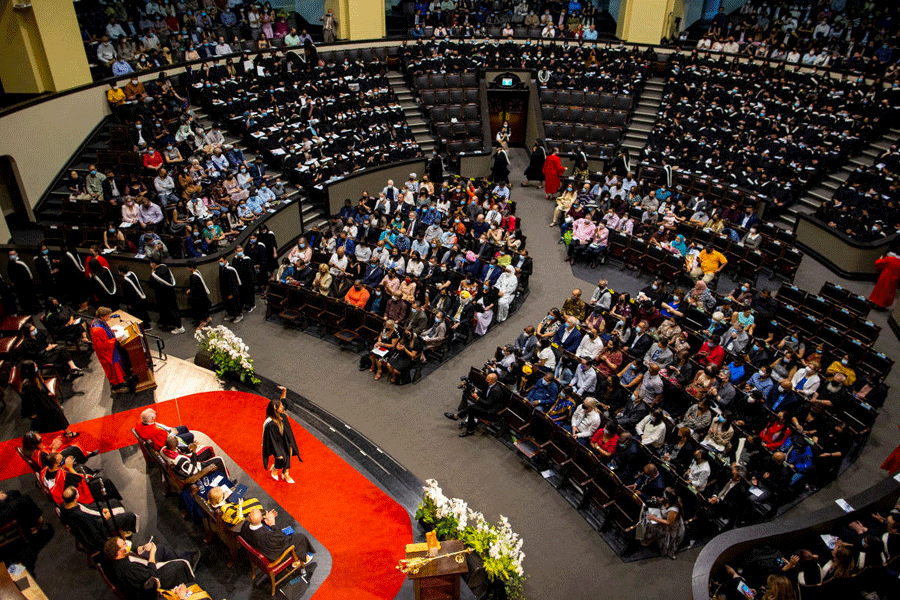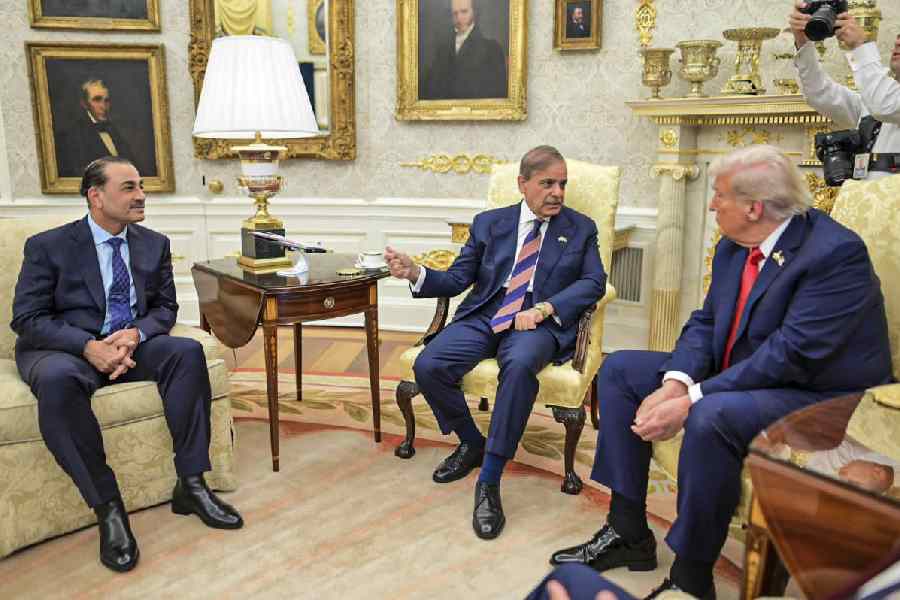
Since its inception, Calcutta was a cosmopolitan port city with a large Muslim community, a fairly substantial Anglo-Indian presence (the mixed race which lived in India), Armenians, Chinese, Goans, Syrian Christians, Parsis and Jews. Of all these 'minority' communities, the Jews were by far the smallest, numbering, at their peak, in the 1940s, from around 4000 to 5000. Most Calcutta Jews immigrated to the United Kingdom, Canada, the United States of America, Australia and Israel in the 1940s and 1950s, thus depleting the community. By the 1960s it had become increasingly hard to sustain Jewish community life. Now, in 2015, there are about 20-odd Jews in the city.
I interviewed over 30 people, most between 70 and 90 years old, who remembered the Jewish presence in Calcutta. So I gained a glimpse into 'anglicized Calcutta' and the conditions that enabled accommodation, acceptance and deep bonds among minorities and the majority community by virtue of which they could thrive in this colonial enclave. An understanding of colonial anglicized Calcutta may provide some insights as many grapple with the politics and practice of 'multiculturalism'.
In spite of the hierarchies of colonialism, where the 'British looked down on everyone', there was a great deal of accommodation, mutual interchange and deep attachments among the various communities comprising anglicized Calcutta. There was considerable assimilation with the imposed culture of British India among colonial elites across all communities, so they could succeed in their commercial enterprises and be part of the ruling social sphere.
Those I interviewed recall accepting difference as fact of life. An elderly Punjabi woman states: "We had all kinds of friends, Parsis, Muslims, Anglo-Indians, Armenians and Jews. When we became friends we did not care if they were different. We knew them as people and as our friends."
A Bengali gentleman, in the same vein, proudly asserts: "I was very fortunate to have been brought up in a city where the minority communities all made a special contribution to the city... We did not discriminate [among the different communities]. That is what made Calcutta what it was..."
This ethos of acceptance and accommodation was built on the scaffolding of shared anglicized values, culture and a common language. The educational background and lifestyle shared by the upper and middle classes engaged in the colonial project, bridged the ethnic, religious and cultural differences between communities. While respondents often spoke a different language in their respective homes, they were fluent in English, as the schools they attended taught in English. English medium schools fostered a shared understanding and world view that welded members from different ethnic communities, generation after generation.
Although Christianity existed in Protestant and Catholic schools, religion, for the most part, was a private matter. Many spoke of the special care taken to accommodate one another's traditions and customs. For example, friends of Jews accepted or accommodated the constraints around their being kosher, and Jews in turn worked around the religious restrictions of their friends. Whereas religion was a strictly private matter, the associated festivals and celebrations were often shared, especially among diverse communities. An elderly Parsi woman recalls: "Friday night dinner with the Jewish family next door was very memorable. We were there for the prayers... In our home, we did not have the father of the family saying a prayer and passing wine around... It was not only their ritual - we were part of it.
Respondents commonly described with great pleasure the incorporation of cuisine from other communities. An Anglo-Indian respondent noted: "In my aunt's house whenever we had celebrations, a standard offer was Jewish aloomakala, yakni pilaf - a rich Muslim dish that my father would bring home, and fried fish - it would always be an eclectic meal. It was part of everyday life for us."
The culture of tolerance in Calcutta did not obliterate differences between communities. Instead, all respondents described being proud of their particular identities. Difference was not obliterated, but celebrated. Most respondents from minority and Hindu communities mentioned having their own clubs, social and religious gatherings. An elderly Anglo-Indian remembers those times: "We used to have a roaring good time. Picnics at the Botanical Garden - the Anglo-Indians would have their picnics, the Goans theirs, and the Jews and Parsis would all have their own. We also had our own clubs. Later we got to know each other. Then, in addition, we would all go to the zoo. We would cycle there and say hi and bye to all our friends."
Ethnicity or religion based clubs played an important role in reinforcing community identity. Simultaneously, integrated clubs for sports, cards and general socializing were opened to members of all communities, although British and European clubs were exclusive. The races too, were greatly enjoyed, by elites and upper middle classes of all communities where they met in the racing enclosure on a weekly basis. This co-existence of exclusive and shared community cultural spaces among the local communities created a critical confluence of pride in community ethnic identity and an enjoyment of the diversity that surrounded them. However, for the most part, boundaries were maintained around intermarriage, as that would dilute community and religious identity.
This shared social milieu was far from superficial. Warm friendships across communities were the norm across the social spectrum. Many recalled their closest and even best friends being from communities other than their own. Close friends were considered family. A Muslim respondent talks of her father's closest friend being Jewish: "I probably opened my eyes and first saw Uncle Dave. I really thought Uncle Dave was my relative. They were part of my family... He treated us like his own."
An elderly Syrian Christian gentleman talks about the reciprocity in the relationships between communities. "We were friends and colleagues [with Jews] and exposed to each other, [we] visited their families on festive occasions in particular. When there was someone sick we mutually took care of each other."
Clearly the nature of the friendships that people shared across communities was one of intimacy, affection, trust and dependence.
Shared neighbourhood geography where diverse communities forged intimate bonds by living among one another, was also critical for community integration. Colonial clients, who existed outside of colonial divide-and-rule mandates, lived in mixed neighbourhoods, enabling strong bonds to be forged across communities. Socializing was neighbourhood based. An elderly Parsi explains how, as a child, geographic community rather than identity defined her social milieu: "We were not allowed to go to the Parsi club when we were young because my parents were not members. We did not have transport. You see, in those days we did not have a car and it meant going all the way to the Maidan which we thought was too far. We were so sheltered we were not allowed to go anywhere. We could go to Jewish homes because that was in the neighbourhood. We had a few Parsi friends from school whose homes we went to and we had the same freedom there as we did with our Jewish neighbours.
The importance of mixed neighbourhoods for solidarity across ethnic/religious lines is underlined by a Sindhi gentleman: "All the people in the mansion [where we lived] did not bother about what community each family was from. We were secular in nature and accepted one another and were kind of proud if someone achieved something."
These sentiments are echoed by a Bengali woman who grew up in Agarpara where employees, predominantly Jewish but others as well, lived in the compound of the B.N. Elias Company: "We grew up like family. We lived in each other's houses; we slept in each other's homes. There were no fences and no boundaries, neither physical nor mental. Just as our lawns flowed into one another's gardens so too did our lives. We did not know the difference between being Jewish or Bengali. Whatever difference there was appeared to be in our food habits or clothes (the Bengali mothers wore saris while the Jewish mothers wore jalabas): we relished it as a part of our colourful lives. There was nothing that we did not know about each other's lives.
Calcutta's cosmopolitan past may offer some useful insights as our contemporary world struggles to embrace difference. This is especially where racism and multiculturalism are often at odds. In this vitiated atmosphere, official and political scripts of 'multiculturalism' are often undermined by practices that heighten difference. In such contexts, members of minority communities, faced with exclusionary politics and desiring to maintain their own identities, live in separate spaces, do not merge with the dominant culture and may be excluded from the mainstream of the societies that they inhabit. To bolster their own identities and to combat racism or other exclusionary practices, they reject all too frequently the politics of assimilation. This has undermined the development of a shared world view among minority communities in many places. Formal commitments to multiculturalism have resulted in exclusion and isolation rather than integration. Minority communities often find themselves far from where opportunities flow.
More on this project can be found at www.jewishcalcutta.in










